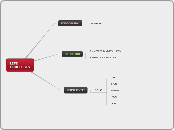Monotremes are the only living mammals where females lay eggs instead of giving live birth. They produce sexually. Except during mating season, monotremes are solitary animals
Marisupial are more superior to monotremes because zygote is more protected as its close to the mother. eggs can get eaten by other animals and not all eggs hatch due to some being infertile or zygote mortality occurs inside the egg. They give live birth but not long gestation times as placental mammals. they give birth very early and embryo from mothers birth canal.
placental is more superior to marisupials because the zygotes are more healthy when born. mothers have to nurture baby marsupial longer than what placental mammals have to do to baby.
Made of chitin and protein, jointed appendages, strong exoskeleton
No head, bilateral symmetry, multiple nerves
invertebrates,vertebrates, dorsal nerve cord, notochord,paired gill slits,post anal tail, most complex systems
Vertebrate
Jawed animals
Mammals
Placental
Pholidota
chiroptera
Primates
Marsuplals
Monotremes
Chondrichthyes(cartillaginous fishes)
Amphibia
Aves
Reptillia
Osteichthyes(bony fishes)
Agnatha(jawless fish)
Representitative Species: Hagfish
Cephalochordata
Urochodate
Viceral mass, digestive and circulatory system, foot is used to move,invertebrate
Segments were introduced most having a single opening digestive cavity(mouth and anus).
Digestive and circulatory system, coelom (real body cavity), body segmentation
Radical symmetry, medusa and polp are the 2 different formd, nerves
Digestive system more advanced, two openings are more efficient
simple living organism, asymmetry, no movement(sessile), no mouth,digestion,nervouse system,flagellated cells for water flow.
Plants are multicellular, photosynthetic and have a cell wall made of cellulose
absorb nutrients
carry out photosynthesis
Fungi can be multi cellular or unicellular, fungi are Eukaryotes and heterotrophs
Holozoic, Saprozic
Protists Reproduce asexually through binary fusion where there is some exchange of DNA
Single celled, Prokaryotic, No nucleus, membrane bound organelles
They do reproduce asexually and sexual, undergoes sporogenesis like other fungi. When the cell splits apart, and creates a copy of the fungus.
Sexual reproduction takes place in the fruiting body,sexual reproduction happens through basidiospores being born on basidia, asexually can be gross similarity to others, by the formation of a distinctive anatomical feature.
The mainly reproduce by budding and fission, yeasts also engage in sexual reproduction that results in the production of an ascus,placing them in the ascomycota.
Reproductive strategies: Zygomycota usually produce asexually by reproducing sporangiospores, produce sexually when environmental conditions become unfavorable, to reproduce sexually, 2 opposing mating strains must be fuse or conjugate theregy creating zygospores.
unicellular prokaryotic cells, single circular chromosome, mostly asexual reproduction, no membrane bound reproduction.
- asexual reproduction, most can't move, heterotrophs and autotrophs, cell walls lack peptidoglycan
Protists can be unicellular,heterotrophs, autotrophs
Live in moist aquatic environments
TAXONOMY
Eukarya
Animals
Echinodermata
Starfish
Chordata
Shark
Arthopoda
Crab
Myriapoda
Pauropoda(pauropus huxleyi)
Diplopoda
Symphyla(scutigerella causeyae)
Chillopoda(centipede)
Crustacea
Malacostraca
Maxillopoda
Branchiopoda
Ostracoda
Chelicerate
Eurypterid
Xiphosura
Arachnid
Hexapoda
Insecta
Entognatha
Mollusca
Squid
Cephalopods
Octopus
Bivalves
Helix Aspersa
Gastropods
Ostreidae
Platyhelminthes
Flatworms
Annelida
Segmented Worms
Cnidaria
Jellyfish
Nematoda
Roundworms
Porifera
sponges
Plants
Angiosperms
Magnoliids
Plants that produce flowers and covered seeds, sturdy structure so they they can relieve the sunlight, vascular,
Gymnosperms
Maidenhair Tree
Vascular plant where seeds are stored inside the fruit, autotrophic, photosynthetic organisms that tend to conserve water.roots used for nutrients.
Seedless Vascular
Ferns
Do not produce flowers/seeds, reproduce using haploid unicellular spores, stem which provides structural support and absorb nutrients.
Bryophytes
Pincushion Moss
Adaptations: non vascular plant,near fresh water, the plants that started off on the water,early stages of plants.
Fungi
Deuteromycota
Aspergillus niger
Basidiomycota
Agaricales
Ascomycota
Sordariomycetes
Zygomycota
Black bread mold
Archaea
Protista
Animal-like
Sporozoans
Plasmodium
Ciliates
Paramedcium
Sarcodines
Ameoba Proteus
Zooflagellates
Trypansoma Gambiense
Fungi-like
Water molds
Pernonosporales
cellular slime mold
Dictyostelium
acellular slime mold
red rasberry slime mold
Plant-like
Phaeophyta
Phaeophyceae
Pyrrophyta
Cystodinium ineris
Chlorophyta
Eudorina elegans
Euglenophyta
Euglena viridis
Rhodophyta
Phymatolithon laevigatum
Chrysophyta
Prymnesium parvum
Bacteria
Archaebacteria
Anaerobic Methanogens
Thermophiles
Halophiles
Eubacteria
Spirillum
Campylobacter Jejuni
Bacillus
Staphylococcus Epidermidis
Coccus
Bacillus Circulans









